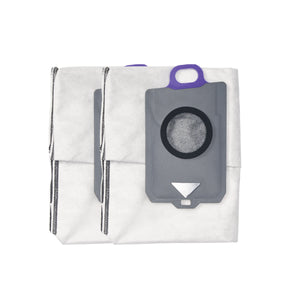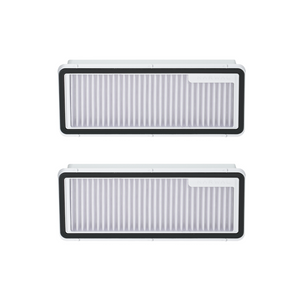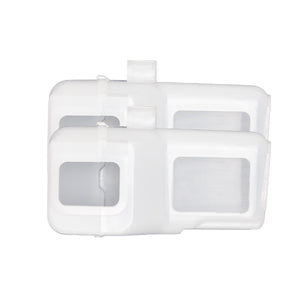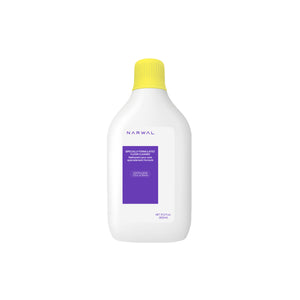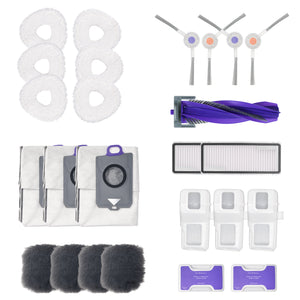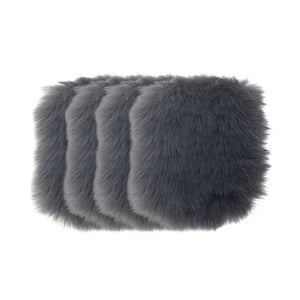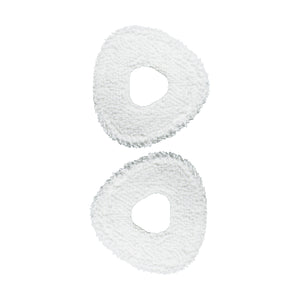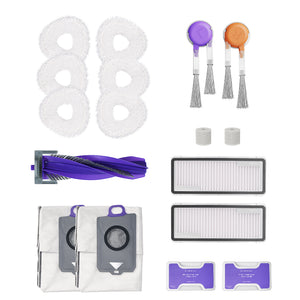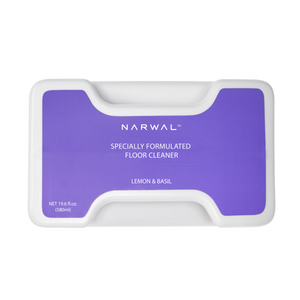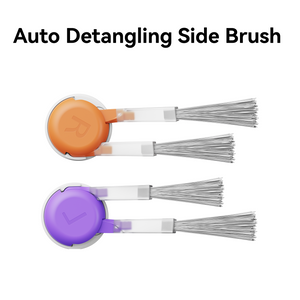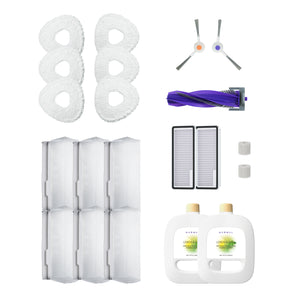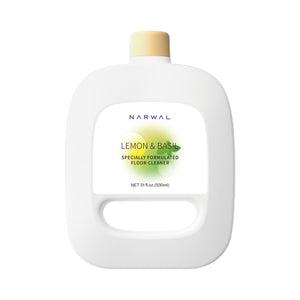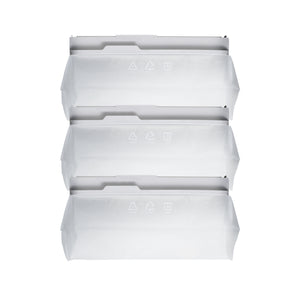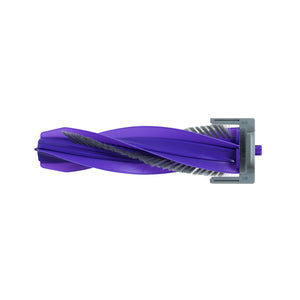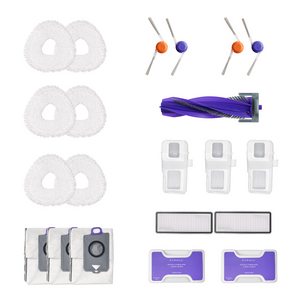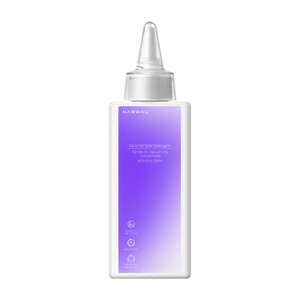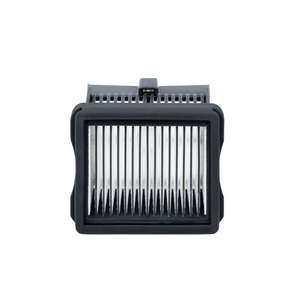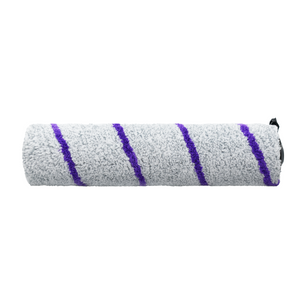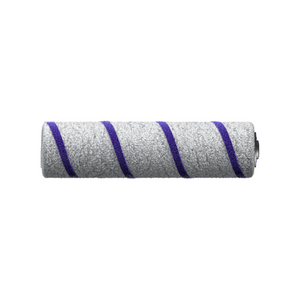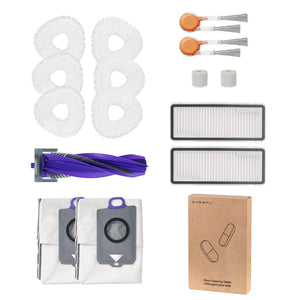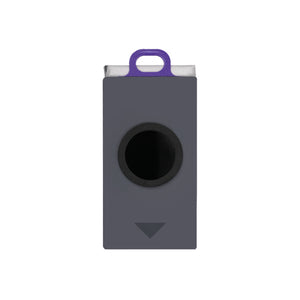Laminate flooring is a multi-layer surface that looks like hardwood but is more affordable and easier to install. But easier does not mean maintenance-free.
Many homeowners struggle with streaks, swelling, or dullness. This is not because they don’t clean often, but because they don’t clean the right way. Too much water, the wrong tools, or leftover residue can all shorten the life of your floors.
In this guide, you’ll learn what tools and products to use, how to clean laminate flooring step by step, and how to handle tough stains like grease, pet messes, and paint. We’ll also walk through long-term maintenance habits to keep your floors looking new.
Let’s get into it.
Tools You Need to Clean Laminate Flooring

To clean laminate floors effectively without damaging them, you need the right combination of gentle tools and moisture-controlled products.
- Cleaning Tools
Microfiber mop, Soft-bristled broom, Vacuum with hard floor setting, Spray bottle, Two buckets (for wash and rinse), Dry microfiber cloth or towel, Plastic scraper (for stuck residue).
- Laminate Floor Cleaner
White vinegar diluted with water, Mild dish soap, Black soap, Baking soda paste, Rubbing alcohol, pH-neutral laminate floor cleaner.
- Ultimate Tool
Narwal robot vacuums with automatic moisture control for streak-free, safe laminate cleaning.
How to Clean Laminate Flooring?

The key to cleaning laminate flooring is controlling moisture. Too much water can seep into seams and cause swelling or warping.
Step 1: Sweep or Vacuum
Use a soft-bristled broom or a vacuum with a hard floor setting to remove dust, dirt, and grit. Avoid vacuums with a beater bar, which can scratch the laminate surface. Clean 2–3 times a week to prevent buildup.
Step 2: Spot Treat Sticky or Problem Areas
For sticky messes or dried residue, use a damp microfiber cloth with diluted dish soap or vinegar. Gently wipe and dry immediately. For tougher spots, use a plastic scraper instead of metal.
Step 3: Lightly Damp Mop in Sections
Spray a laminate-safe cleaner or a mix of warm water and a splash of vinegar lightly onto the floor. Never pour water directly. Use a well-wrung microfiber mop and clean in sections with overlapping strokes.
Step 4: Rinse If Needed to Avoid Residue
If you use soap or commercial cleaner, make a second pass with clean water using a damp—not wet—mop to rinse off any film or buildup.
Step 5: Dry the Floor as You Go
After each section, follow with a dry microfiber cloth or mop to remove remaining moisture. This prevents water damage, streaks, and dulling of the surface.
Step 6: Avoid Harsh Products and Waxes
Never use polish, wax, ammonia-based cleaners, or anything abrasive. These can erode the protective layer and leave the surface looking dull or streaked.
Step 7: Clean Regularly
Establish a routine. Sweep or vacuum 2–3 times a week, mop lightly once a week or as needed. Quick maintenance prevents buildup and extends floor life.
How to Clean Common Stains on Laminate Flooring?

Even if you clean your laminate floors regularly, unexpected stains still happen. Whether it's grease from cooking, dog urine, or accidental paint splatters, each stain requires a different approach.
Oily residue often needs something that can cut through buildup without harming the finish. Pet accidents call for odor-neutralizing solutions that won’t soak into the seams. And when it comes to paint or ink, gentle lifting agents work best.
How to Remove Sticky or Greasy Residue?
The best way to remove sticky or greasy spots is by using a damp microfiber cloth and a small amount of mild dish soap. This cuts through the residue without damaging the floor’s protective layer. Wipe the area gently and follow up with a clean, dry cloth to eliminate any moisture.
For tougher buildup, use diluted white vinegar to loosen the grime. Always avoid abrasive scrubbing, which can leave permanent marks.
How to Clean Dog Urine Off Laminate Flooring?
Start by wiping the area with a microfiber cloth dampened in warm water and a drop of mild dish soap. This breaks down grease without harming the surface.
If the residue is stubborn, apply a mix of water and white vinegar and let it sit for a few seconds before wiping again.
Finish with a dry cloth to prevent moisture from settling. Avoid scrubbing too hard, which can leave dull patches.
How to Clean Paint and Ink Off Laminate Floors?
Blot the urine immediately using paper towels to prevent staining.
Once the area is dry, clean it with a vinegar and water solution using a soft cloth. This not only removes the smell but also disinfects without damaging the floor. After cleaning, dry the spot completely with a towel.
Skip ammonia-based products, which may encourage pets to repeat the behavior.
How to Clean Paint and Ink Off Laminate Floors?
Dampen a cloth with rubbing alcohol and gently press it onto the stain. This helps lift ink or fresh paint without spreading it.
For dried paint, use a plastic scraper with care, then clean the spot with diluted alcohol. If needed, a small amount of acetone can be used sparingly, but always test it in an inconspicuous corner first.
Stay away from rough pads or solvents that could wear down the laminate finish.
How to Maintain Laminate Floors Long Term?

Long-term care for laminate flooring comes down to consistency and prevention. Regular light cleaning keeps surface dust and grime from becoming a problem.
A few small habits—like placing pads under furniture, drying the floor after mopping, and using entryway mats—can go a long way in protecting the surface. And when the finish starts to lose its luster, a gentle polish or restorer can refresh the look without damaging the material.
Follow a Daily and Weekly Cleaning Routine
Sticking to a regular cleaning schedule helps prevent buildup and surface damage. Dirt and grit can wear down the floor’s finish over time.
To avoid this, sweep or vacuum 2 to 3 times a week. Use a vacuum without a beater bar or a dry microfiber mop. Once a week, do a light mop with laminate-safe cleaner or diluted vinegar. This simple routine takes less effort than removing tough stains later.
Shine and Restore Dull Laminate Floors
If your floor looks cloudy, it’s likely due to leftover cleaner or trapped grime. To restore dull laminate floors, clean with a vinegar and water mix. This removes most surface film.
Still looks dull? Use a laminate floor restorer. Apply a thin layer, then buff gently with a microfiber cloth.
Don’t use wax or oil-based products. They won’t soak in and will leave streaks. Always check the label if you’re unsure what not to use to clean laminate floors.
Avoid Water Damage From Mopping
Too much water is one of the biggest threats to laminate. It can seep into the seams and cause swelling. Mop with a barely damp cloth—never wet. Spray cleaner on the mop head, not the floor. After mopping, dry the area with a cloth right away.
Use a Robot Vacuum to Prevent Dust Buildup
With a robot vacuum running regularly, you won’t have to worry about dust collecting on your laminate floors.
The Narwal robot vacuums not only vacuums but also mops in one pass. These models can detect different floor materials and adjust mop pressure accordingly to protect the surface. They can also control water output to avoid overwetting, making it especially suitable for moisture-sensitive flooring like laminate.
[cta:narwal-freo-pro-robot-vacuum-mop]
Prevent Scratches With Furniture Pads
Furniture legs can leave marks that build up over time. Add felt pads under chairs, tables, and other moveable items. Replace them regularly. For high-use areas, like under dining tables, use a rug or mat for extra protection.
Use Doormats to Trap Dirt and Salt
Entryways take a beating, especially in winter. Salt and gravel from outside can dull the surface fast. Use mats both inside and outside the door to catch debris. Pick mats with non-slip backing and clean them often. A quick sweep every day near the door makes a big difference.
FAQs About Cleaning Laminate Flooring
Can You Use a Steam Mop on Laminate Floors?
No, steam mops are not recommended for laminate flooring.
The high heat and moisture can seep into seams and cause swelling or warping. Stick to low-moisture methods like a microfiber mop with a safe cleaner. If you want deep cleaning, spot treat with a damp cloth and dry immediately.
Can You Use Vinegar to Clean Laminate Floors?
Yes, diluted white vinegar is safe and effective for cleaning laminate floors.
Mix one part vinegar with three parts warm water and use it with a microfiber mop. It helps remove film and cuts through residue without damaging the surface. Avoid pouring vinegar directly on the floor or using it in high concentration, as too much acidity over time may wear down the protective coating.
How Do You Disinfect Laminate Flooring Safely?
Use a mild disinfectant that’s safe for laminate or make your own with diluted vinegar.
Disinfection doesn’t require harsh chemicals. A light vinegar solution can sanitize everyday messes without soaking the surface. For deeper disinfection, especially after pet accidents, spray the cleaner on a cloth or mop—never directly on the floor—and dry immediately to avoid moisture damage.
What Is the Best Way to Clean Laminate Floors Without Streaks?
Use a microfiber mop with a lightly dampened cleaning solution and dry the floor as you go.
Streaks often come from using too much water or letting cleaner dry on the surface. Always spray the solution on the mop, not the floor, and avoid soap-heavy products. A quick dry wipe after mopping helps leave a clean, streak-free finish.

Keep It Simple to Clean Laminate Flooring the Right Way
Keeping laminate floors in good shape doesn’t require perfection, just a bit of consistency and the right approach. When you understand how to clean gently, manage moisture, and prevent small damage before it builds up, maintenance becomes second nature.
And when daily upkeep feels effortless, it’s easier to stay on track. That’s where smart cleaning tools come in.
Narwal takes care of the dust, handles light mopping, and adjusts to your floor’s needs without overdoing water. If you want less routine and more peace of mind, it’s a simple upgrade that fits right into the habits you already have.
Let Narwal help you care for your floors smarter, not harder.





















